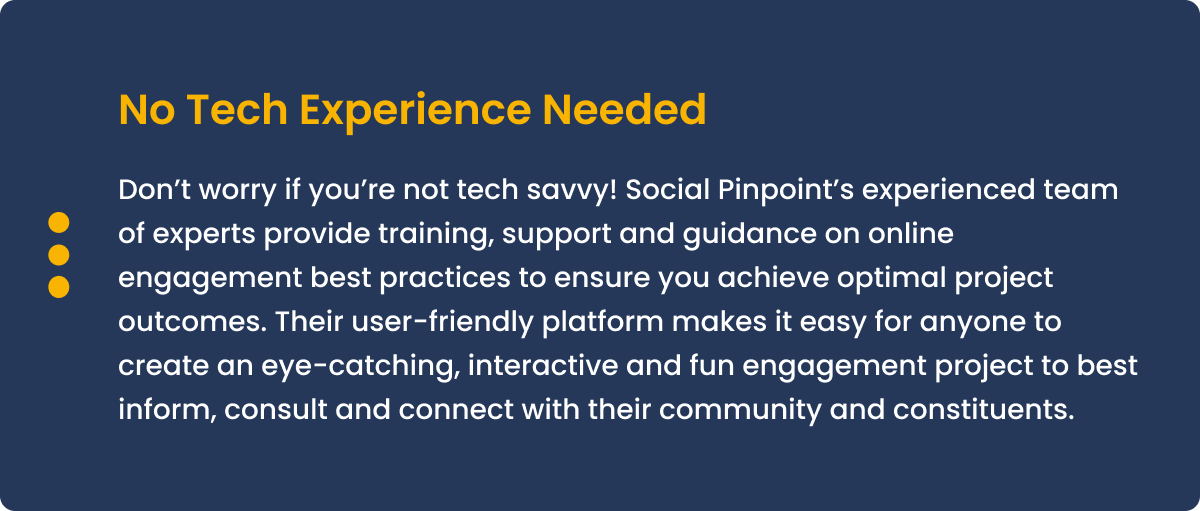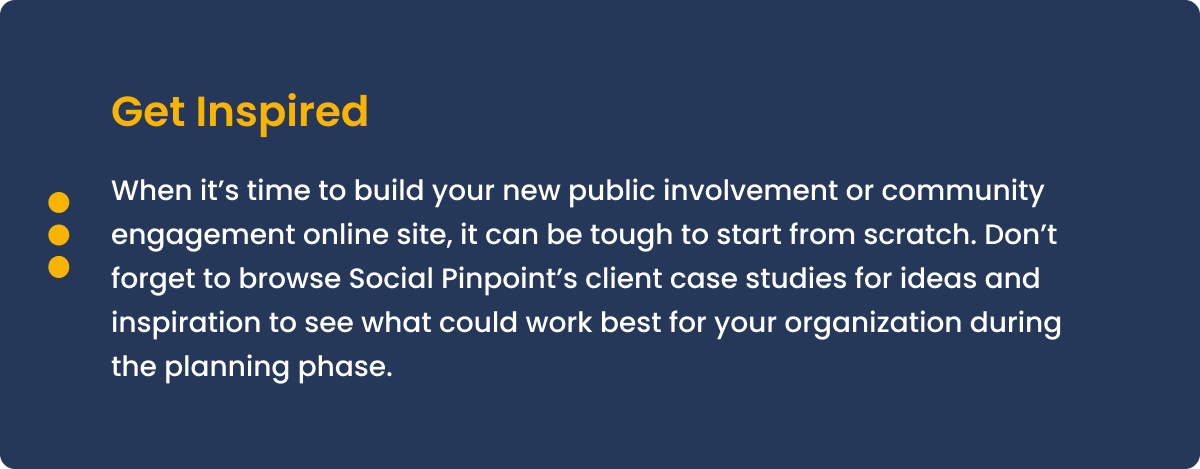In this new three-part blog series, follow Adrienne Hamilton’s journey to get a client-side view of successful project planning, launching, and reporting of a public involvement initiative for transport. Learn how you can also create positive project outcomes with your online community engagement platform of choice. The first installment will focus on effectively planning a public involvement initiative.
As the Denton County Transportation Authority’s (DCTA) recent Senior Marketing and Communications Manager, I was tasked with developing and leading the marketing and communications plan for the agency’s GoZone microtransit public involvement project in the spring of 2021. This new service was slated to launch in fall 2021 – just a few months later. DCTA needed a flexible suite of community engagement tools to carry this off in a short amount of time.
From urban planning and public transportation development to local government projects, the public should always play a vital role in the decision-making process and have their voices heard.
Marketing, communications, and public information professionals across the globe should also work diligently through challenges and obstacles to develop strategic, interactive public engagement initiatives to reach residents, constituents, and stakeholders, so they’re properly informed and can share their feedback on projects that shape their community.
I knew that implementing an online community engagement platform would be necessary to ensure the voices of Denton County would be heard, which is when my team started the search!
Receiving instant help and guidance.
Most of us have heard the saying “the first step is always the hardest.” Thank goodness that proverb wasn’t true when I reached out to Social Pinpoint’s team to learn more about their digital community engagement platform! I was able to schedule a live walk-through of the platform in less than 72 hours and saw “behind the curtain” so to speak.
During my initial call with Social Pinpoint, they not only shared various best practices with me and my team, but we all began to brainstorm solutions for our GoZone public involvement microsite plan. This was of great help since this was our first time developing a digital engagement campaign of this magnitude with so many features.
I instantly noticed a key distinction of Social Pinpoint from other online community and civic engagement platforms: flexibility. We could easily scale up or down based on outreach needs and community engagement goals, which made the process of creating so much easier.

Trialing and testing prior to launch.
I knew our team needed a comprehensive platform to be the foundation for all our public outreach and interactive needs. Being able to trial Social Pinpoint prior to committing to a subscription was so valuable. After receiving access, I quickly discovered that Social Pinpoint is a “one-stop-shop” for all public involvement planning needs.
I was initially worried about how hands-on or technical the platform might be, but those fears dissipated as soon as we received access. The platform was user-friendly and I could easily create an eye-catching and interactive project that met all our needs, specifically for public transportation requirements.
Another important consideration for public transit professionals when planning public involvement is to ensure an inclusive and equitable engagement process that fosters participation by diverse groups of people. This can present unique challenges and had to be kept top-of-mind throughout the planning process. We had to ensure we were effectively engaging hard-to-reach populations including people with limited language proficiency, low-income, and minority communities.
Internal challenges many public transportation agencies seem to face are limited staff, and lack of time and financial resources to fund public involvement software and tools. But, we were determined to overcome these barriers.
So, from a public transit perspective, it was critical that our community engagement platform could support and uplift our team to address these challenges.
Our community engagement platform requirements.
My team knew we had quite a few challenges to overcome when executing our public involvement initiative. Thankfully, Social Pinpoint enabled us to deploy the following public involvement techniques for transportation decision-making:
Accessibility and Title IV Compliance
- Numerous creative templates with a responsive design that is Web Content Accessibility Guidelines (WCAG) compliant.
- Incorporation of Google Translate so microsite users could change the page(s) to their native language (a vital component for public transit and municipalities when it comes to Title VI of the Civil Rights Act).
Public Transit Software Integration & Location-Based Feedback
- Simple program integration upload to showcase transit routes and stops, construction locations, parks and trails, buildings and more (i.e., Remix, Mapbox, Nearmap, Esri ArcGIS).
- Location-based feedback on the interactive map feature to analyze comments from “pins” from the microsite visitors.
Stakeholder Management and Topic Sentiment Tagging
- List management and topic tagging for simple reporting extraction and download that saves time.
- No sign in necessary for the public to comment throughout the platform which increases the percentage of receiving feedback as some people don’t like to give out their personal information.
- Ability to measure sentiment for all platform engagements with downloadable charts and graphs for reporting needs (neutral, positive and negative).
- Easy exportation of data to help reduce report extraction time and track specific sentiment with various topics for board and public presentation.
Online Community Discussions & Town Halls
- Ideation tools, interactive mapping and forum tools to allow for online community discussion where people can comment on various discussion topics and “vote” on them.
- Opportunity for our team to respond to all comments and interact with public feedback in real-time.
- Virtual town hall feature with integration with Zoom to host online meetings for those who can’t attend in person due to various reasons (i.e., school, work, etc.).

Preparing for project “takeoff”.
After a successful trial period, I quickly purchased the Social Pinpoint package that worked best for DCTA and our public involvement initiative.
As my team was able to kick-start the development of the comprehensive microsite during the trial period, we were able to finalize the build in time for the public involvement launch date. Being able to utilize the draft project we built in the trial streamlined our launch process and allowed us to focus on promotion.
Simultaneously, our team had to develop a comprehensive marketing and communications plan to promote the project throughout Denton County. This would help us to capture a good amount of responses and feedback to help DCTA’s board of directors make the best mobility decisions for the community.
Once again, we were able to tap into the Social Pinpoint team’s vast resource library, helpful guidance and recommendations on how to best promote a public engagement project in your community.
While developing our marketing plan, we made it a priority to include how simple it was to navigate the GoZone microsite in outreach materials, news releases and digital marketing collateral. Key highlights included short “how-to” videos our team created for the Ideas Wall and Interactive Map. They were an absolute hit with our community who appreciated the ease of use for each platform feature.

Stay tuned for the next installment that will highlight my experience launching the public involvement campaign. Reach out to Social Pinpoint and take your public involvement and community engagement project to the next level!

Adrienne Hamilton is an award-winning B2C and B2B marketing and communications professional with more than 10 years of demonstrated success in helping companies build and maintain a positive brand image and exceed business goals. Hamilton served as Denton County Transportation Authority’s (DCTA) Senior Marketing and Communications Manager and spearheaded the agency’s GoZone microtansit public involvement project in which Social Pinpoint was key to it becoming one of the most successful public involvement campaigns in agency history.












